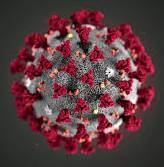
Covid-19 self care while sheltering in place

Nasal Hygiene
We are all washing our hands and avoiding touching our face with unwashed hands, to avoid giving the virus easy access to the mucosal tissue of the nasopharynx. There is another practice that we can do to decrease our chances of infection – the nasal rinse.
Ingredients –
Do not use plain water: it irritates your nasal cavities. Use one cup of boiling water (cooled down to warm – you do not want to burn your nose), with one eighth to one quarter teaspoon of sea salt (not iodized table salt).
Once you are used to the “drowning feeling,” add one drop of thyme or oregano essential oils to the mix. The first time you use essential oil in your nasal rinse, it might feel a bit burning, or like a small earthquake in your brain. That sensation passes in a few seconds, and is diminished after the first time.
Essential oils that are believed to kill the Corina virus are thyme, oregano, rosemary, lemon, eucalyptus, cinnamon leaf, tea tree. Nose rinsing is considered “internal use,” which means you want higher grade of essential oils. My recommendation would be Original Swiss Aromatics, Young Living (it is a multi-level marketing company though), Eden Garden or Plant Therapy. There are other companies that may produce excellent oils, but these are the ones I am familiar with.
Method –
I suggest using a cup rather than a neti-pot or a nasal rinse bulb. Snorting the water will get it in deeper. First blow your nose. Then simply stand over the sink, close one nostril, and snort the water through the open nostril so it reaches the back of the throat. Release the closed nostril, and spit out through the mouth. Some water might come out the nostril that was blocked (it can also feel like it is coming out of your ears – it is not…). Now block the nostril you just rinsed, and rinse the other nostril. Alternate 2-3 times. Then gargle with the remaining water. Blow your nose, then bend over and blow your nose again. It is possible that water might come out of your nose over the next 10 minutes, especially if you bend over.
Yes, it does feel a bit like drowning the first time you try it, but by your second or third time, it will feel totally natural. Never use water alone, as it irritates the tissue in the back of the nose.
I suggest nasal rinsing once a day. If you opt to do it twice, do once with just salt water and once with essential oils. I would not use the essential oil rinse more than once a day on a regular basis.
Do not rinse your nose before going to bed, as the water can come up into the nose when you lie down. An hour between nose rinsing and sleep is enough.
How to evaluate an essential oil? The quick and dirty trick is to smell them. An oil that has a strong camphor or menthol like smell, is likely to not be pure, no matter what the label says. It was likely chemically extracted and has traces of those extracting chemicals. It is easiest to tell with an oil like peppermint (and to a lesser degree lemon). Most oils on the market will have a menthol/camphor “after-smell” when you open the bottle, but peppermint should actually smell sweet.
If you are using essential oils in a spray to sanitize your hands or counters, then you can buy the larger (4oz) bottles of cheaper brands, but for your nose, get the better quality oils (they are likely to be $15-20 for a 1oz bottle – same price as the cheaper oils for a 4oz bottle)
To make a sanitizing spray, use 120 drops (4 teaspoon) of essential oils per 1-2 cups of water. I suggest making smaller amounts, so the oils do not evaporate and the mixture loses its effectiveness.
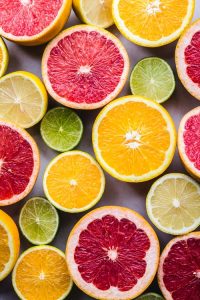
Diet
Foods to minimize, or eliminate are sugar, starch/carbs, and most dairy products (except yoghurt and kefir).
The most important thing you can do is to let go of sugar and starches. These increase inflammatory response and weaken the immune system. If you have been stocking up on pasta, this is not the time to eat it! The produce aisles are still very well stocked. It is currently possible to get frozen vegetables and berries, so you can stock up for “rainy days.”
Wheat is a common allergen, though many people are not aware of it because the effect on them is relatively small and does not manifest in severe (or any) symptoms. Both wheat and dairy can contribute to phlegm production, something you want to avoid in these times. Avoiding these foods will help keep your nasal passages, your sinuses, and your lungs clean and at more optimal condition.
Yoghurt and kefir offer immune enhancing qualities with the probiotic action they provide. However, we are talking about plain, unadulterated yoghurt or kefir not the flavoured ones.
Grains that enhance immune system function are oats and barley. If you need another grain, for variety use millet.
Corn is a grain, it is not a vegetable. In our culture, where corn is added to so many products, it has become a hidden allergen to many people. When you eat corn, just was with wheat, your immune system is busy working on these foods. It is wise to eliminate corn in order to reduce inflammatory response and make the immune system more efficient.
Fresh fruits and vegetables (or frozen) are your best friends in times of stress and depletion.
Dark leafy greens help with circulation and mood and are anti-inflammatory. See the green slime soup recipe to get your dosage of daily greens, or stir fry greens (kale, spinach, collards, beet greens, etc.) with some coconut oil, a table spoon of pitted olives, a tablespoon of sunflower seeds, and 2 tablespoons of frozen blueberries. Stir fry for 3-5 minutes, until the greens are mushy. With this medley of flavours, you might just fall in love with greens.
Dandelion greens are excellent for helping with infections. They act as both a poultice to soothe the mucosal membranes and are antimicrobial at the same time. They can also be used as a poultice externally, on cuts (and even bruises) as well as on the chest, should you get an infection. Dandelion root is a strong antimicrobial. We are about to go into the dandelion season. If you did not chemically spray your garden, there should be lots of dandelions waiting to be picked. The roots can be dug out, washed and dried: they will keep in a dry spot for a long time, ready to be used in teas should you get sick.
Root vegetables, like carrots and beets (not potatoes – use yams instead), nourish the body and help build up blood. They also help cleanse the liver and move the bowels.
Keep your legumes and beans to the less starchy ones – lentils, peas, and mung beans.
Being an ethical vegetarian, I do not offer advice on meat. I get my protein from lentils, peas, tempeh, mushrooms, chickpeas, and occasionally eggs or protein powder supplements. These protein sources are much lighter and therefore cause less metabolic congestion (byproducts) than meat.
Things to add to your diet:
Oats and barley
Yoghurt or kefir (plain).
Lots and lots of dark leafy greens, and root vegetables.
Berries which are strong anti-oxidants (can use frozen) and build up blood.
Apples are also strong anti-oxidants, and anti-inflammatory.
Pears – baked pears lubricate and strengthen the lungs.
Selenium-rich foods: brazil nuts, sunflower seeds, mushrooms, broccoli
Zinc-rich foods: seeds, tahini. Add a tablespoon of raw tahini over cooked food (oatmeal, vegetables, etc.)
Mushrooms – are immune enhancing. Most famous of the readily available mushrooms are the Shitake mushrooms. Portobello mushrooms also enhance immunity though they are not as famous for it as Shitake.
Garlic – take it in your immune enhancing tea as well as in food
Ginger – take in your immune enhancing tea as well as in food
Horseradish – put a teaspoon over cooked food as a condiment. Most people find it too spicy to eat on its own
Sauerkraut or Kimchi – provide probiotic action and enhance immunity. Use a tablespoon over cooked food, or on its own. I recommend adding 1 teaspoon of horseradish, 1 tablespoon of sauerkraut, and 1 tablespoon of tahini a day as condiments.
Onions – mince an onion and soak it in boiling water for 5-10 minutes. Drink the water, and use the minced onion either while it is warm (say mixed in a salad) or cover up and use later in cooking.
Drink plenty of hot fluids – hot water, herbal teas (see immune enhancing tea). Cold drinks (water or soda) can slow digestion and contribute to gunking up our body. Hot drinks, help flush out the system and de-clog it. Black and green teas are immune enhancers, but they should not be more than half of your water intake. Coffee does dilate the lungs. One cup a day is perfectly acceptable for most people. But if you are one of those who have as many as 8 cups of coffee a day (and even if it is only 2-3), it may be a good time to cut down.
Although the liquor stores have been declared an essential service in New Hampshire, it is not due to the essential immune enhancing quality of alcohol (though it can be used as a sterilizer), but the money being made. This is, of course, a sensitive subject. If you notice that you are depending on alcohol to relax, this is an observation that might be quite helpful. Alcohol slows down your body, and therefore contributes to metabolic accumulations which in turn weaken the lymphatic flow and the immune system and can contribute to the creation of phlegm.
Keep your diet as clean as possible. This will help keep your immune system in optimal condition, and in case you get ill (corona or otherwise), a clean diet will not contribute to (it will reduce) lymphatic congestion, and buildup of inflammation and phlegm. Calorie restriction facilitates healing.
We are all (or almost all) children of a culture of plenty. We are accustomed to using food as our emotional support system and have indulgent habits. If we exercise these habits during these times of great stress, we are weakening our immune system, and the stress relief we get is very temporary. As hard as it is, this is a true opportunity to evaluate our lifestyles, and food is one of the most basic of our lives.
I do not recommend fasting during this crisis period unless you are well versed in fasting and know what works for your body and mind. However, reducing some of our excess consumption is extremely helpful for both our state of mind and for our immune system. It allows the body (and the mind) to operate more efficiently and cleanly.
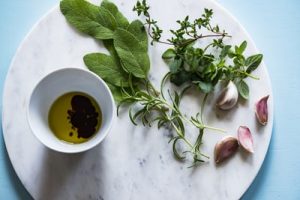
Herbal Remedies
There are lots of Chinese herbs that enhance immunity, fight infection, and protect the lungs. Many of them have been used in the Covid-19 crisis in China, with much success reported. However, in our culture, most of these herbs are not sold in the markets, and require special prescriptions and ordering (especially now that one cannot just hop over to a Chinese herb shop).
The herbal tea below uses ingredients commonly available in stores in the U.S. Use it daily while sheltering in place. Increase the dose to 3 times daily if you do get sick, with added clove (and increase peppermint amount).
Ingredients:
4 generous slices of ginger (or 1 tablespoon of grated ginger)
1-2 clove of garlic (peeled and cut in half)
1 teaspoon of peppermint (loose, or use a tea bag)
1-2 teaspoon nettle leaf (see below if you have blood pressure, or blood glucose issues)
Half a stick of cinnamon (use a stick not powder)
Place these in a tea pot a and add 2 cups of boiling water. Let it simmer for at least 5 minutes. Drink the teas, and you can add another batch of boiling water to extract a second dose.
Drink this at least once a day, though you can keep adding hot water and drink through the day.
If you are getting sick, do this 3 times a day, adding fresh ginger and garlic each time. Add dandelion root powder (available at the health food store). Once a day (one of the 3 doses) use this tea with the addition of 1-2 clove seeds a half teaspoon of mustard seeds. The batch that has the mustard and clove seeds should have extra peppermint added (all the other ingredients are very warming and peppermint is cooling)
Nettle is an herb that is highly anti-inflammatory, and is much discussed in the treatment of cytokine storms. Because nettle lowers blood pressure and blood glucose levels, those on blood pressure or glucose lowering medications should use it with some caution, using a small amount and increasing slowly. If you have low blood pressure, also start with a half teaspoon and increase over 3-6 days to 1-2 teaspoons. If you do not fall into these categories, feel free to use nettle tea, and double the amount if you do get sick.
The ingredients can all be bought at the Portsmouth Health Food Store (nettle, loose peppermint, clove, and cinnamon sticks are all in the bulk section). Ginger, garlic and peppermint (tea bags) are available in most grocery stores.
If you are diagnosed with Covid-19 and are not experiencing shortness of breath, contact me and we can look at getting you some Chinese herbal formulas. I have a limited supply of herbs. I may be able to get you herbs for a week, or otherwise have the herbs ordered from a distributer.
Supplements worth taking –
I am generally not a big believer in large amounts of supplements, but these are difficult times that drain us and we could benefit from some extra support.
Vit C – 2,000mg twice a day (4,000 in all). Increase if you get sick. Some recommend 1,000mg every 30 minutes for Covid-19 patients and even increasing that to 2,000mg if symptoms continue.
Methylated B6, 12 and 9 (folic acid). The methylated version is certainly more expensive but is used better by the body (your urine will not be bright yellow) protects cells, and encourages detoxification. These are also very important for stress and anxiety.
Vit D – 10,000 IU a day for 2 weeks, followed by 5,000- daily.
Esberitox (also knows a “supercharged echinacea” by Schaper & Brummer) – start with 5, 3 times a day for 3 days (small chewables), and continue with 3 twice or 3 times a day throughout the shelter in place period. If you get sick, go back to 5 three times daily.
These are all easily obtained on Amazon.
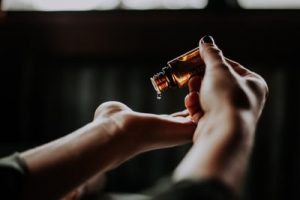
External Therapies
Substitute Moxa – Warming up the neck and upper back. This is important to keep the lymph flow and help expel any pathogens. Do not use an electric heat pad which will only warm up the skin. Fill a sock with 3 cups of agricultural feed corn (which does not pop). You can use uncooked rice instead of corn. Tie up the sock and use it as a heat pack by placing it in the microwave for 4-5 minutes. The sock should be too hot for direct contact with the skin for the first 5-10 minutes, and should be applied over clothing or a towel. Apply over the whole back of the neck and the upper back, close to the spine. This opens up the circulation. The heat can last for 30 minutes, and you can even take it to bed with you. When done, wrap up the neck, or go under the covers.
Do this until the weather gets warmer. As long as the nights are cool (usually mid-May), this is a ver effective therapy.
Poultices. Mustard seed, dandelion leaves, grated horseradish and onions help draw out pathogens. Make a paste with a small amount of boiling water, add a drop of lavender oil, apply on the chest and throat while warm and cover with a cloth. You can add heat by using your microwave corn sock. Only do this when you have a cough on congestion in the lungs or throat. Test out a small patch first, as mustard seeds and onions can be irritating to the skin.
Ear swabbing. Apply a drop of an antimicrobial essential oil to a Q-tip, and swab your ear. Though you are trying to get the oil into the ear canal, you are not pushing or going too deep. You can then use a dropper with warm water to circulate the oil further. This is a way to apply an antimicrobial agent (the essential oil) to the nasopharynx which is connected to the ears. Do this only if you get a sore throat with a burning, once a day for up to 3 days. The sensation in the ear can be quite strong for 30-60 seconds.
Baths. Hot baths with Epsom salts and essential oils, increase circulation and help pulling out pathogens. After the bath wrap up and keep warm.
Essential oils that are said to be effective against Corona are eucalyptus, thyme, oregano, rosemary, tea tree, lemon, cinnamon leaf. You can also add a few drops of lavender to the bath water.
Onions – open the chest and lungs and expel pathogens. However, this effect is best with raw onions. You can also apply minced raw onion (mixed with some water) on your throat or chest if you start getting sick (if possible, use onion with dandelion greens/root together). You can also mince an onion and place it in boiling water next to your bed overnight. Breathing the onion fumes will help detoxify the lungs and clear infection.
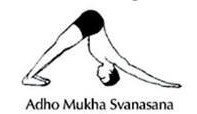
Exercise
Moving the body is essential for lymphatic flow and good immunity.
If you have a daily exercise routine, keep it up. Vigorous exercise for 20-30 minutes is excellent for flushing out the lymphatic system and elevating the mood. “Vigorous” means elevating pulse rate, producing mild sweat, and feeling a sense of openness and lightness (exhilaration) in the body and mind.
If you are not used to exercising, do not push it. Those who love running or another activity, might be sweating buckets and feel great. This is not the goal here. If you are feeling totally drained, sweating profusely, and aching like hell after your exercise, you are overdoing it (for your body condition at this time). It is more important that you move, activate the diaphragm, and sweat mildly, than that you compete in the Olympics (you now get a whole extra year for that…).
If you do not have an exercise routine, try vigorous walking or jogging, dancing, kick-boxing, etc. Many people find that music is a very helpful motivator in exercise. Gardening does count as exercise, but suggest an hour as opposed to 20-30 minutes.
If you have a Yoga, Tai Chi or Qi Gong practice, you might not need to add a more vigorous exercise routine, as these “Yin activities” are designed to open the lungs and move the lymphatic system. However, as this is a time of change, you might experiment with more options.
In the morning, I recommend doing some sun salutes. These do not have to be vigorous, nor do they have to be Yoga sun salutes.
Simply raise your arm above your head as you breathe in slowly and consciously, and bring the arms down as you breathe out, again with awareness and intention. This is gathering up the world as we breathe in, and releasing it as we breathe out. Do this 10 times, increasing focus, intention and awareness each time. You can add forward bending, as in the yogic sun salutes, and you can also do full sun salutes.
Then activate the liver and spleen (large blood/lymphatic organs) with a slow twist. The purpose of the twist here is not to “crack the spine” but to gently wring out the lymphatic system, by activating the lungs and diaphragm against a twist which creates a squeezing of the liver and spleen, increasing blood and lymph flow.
Handstands are excellent to energize the body and mind. However most will not find this to be a reasonable option. Headstands are also excellent, and can be done more restoratively, but again, it requires some previous training. Downward Dog is a pose most people can do. It does not have to be a Madonna-looking downward dog. It just needs to be useful. That means push you hands strongly into the floor and send the shoulders away from the floor. This creates a strong activity in the arms from the wrist to the armpit. Roll the shoulders down into the back, away from the neck, releasing the head and neck, allowing the lymphatic glands to move. Use your legs to stabilize these actions. Many people use downward dog as a pose that activates the legs, lengthening the hamstrings, but for the purposes of immune (and mood) boosting, the action in the upper body is more relevant. If you then lengthen your abdomen towards the spine, you will be getting great benefit. Hold your downward dog for at least one minute, breathing fully and consciously. Increasing the time (up to 5 minutes) is optional and suited for the more robust body type. I suggest practicing downward dog a few times a day for one minute each.
In the evening, do your downward dog for 30-60 seconds, if you have a headstand and/or shoulder stand practice, add those, and then place your legs up against the wall, and lie down with the legs above your heart, draining the leg lymphatics. Enjoy his position (Viparita Karani) for 3-5 minutes.

Breathing
Because Covid-19 attacks the lung epithelial tissue, you want to keep the lungs as open, loose, elastic and strong as possible. Yes, exercise will do that. And so will conscious controlled breathing (Pranayama).
If you have a pranayama routine, you are way ahead of the game, and you should practice it twice a day. The routine can include breath retention, Kapalabhati, nadi-shodhana, etc. If you also practice nauli-kriya, add that to your pranayama sequence.
For those new to breathing practices, simply breathe slowly, with awareness and control. Your final destination is to breathe in slowly and evenly for 10 seconds, hold the breath for 10 seconds (full lungs), then breathe out for 10 seconds, and hold the breath (empty lungs) for 10 seconds), and do this for 5 full in-and-out breaths.
Breathe through the nose with the mouth closed. If you know Ujjayi breathing, use that form: constricting the throat slightly, as if the nostrils are now in the back of the nose at the top of the throat. This produces a light hum that can be heard between the ears. Use this slight hollowing of the throat for both the in and out breaths. It is largely a mental action, of imagining the emphasis of the breath passage in the throat rather than in the nostrils.
Start with a 4-count (4 seconds) in-breath, followed by a four count out-breath, for 10 consecutive breaths. Do this upon waking (in bed is fine) and twice more during the day (one of those can be in bed again at night). Feel the breath throughout your whole chest – lower ribs, side of the ribs, back of the heart, and finally the collar bones rise.
Many of us breathe only with the upper part of the chest/lungs. In Pranayama (literally meaning controlling/restraining the breath) we engage all parts of the lungs allowing them to expand fully. You may notice that it is hard for you to access (mentally connect) some parts of your lungs. This is absolutely normal. Keep practicing, and eventually those stubborn parts will start to open. Just be aware that this part is not moving as easily, and mentally direct more breath to it.
Each day increase the count of the breath (how long I inhale, how long I exhale) by 1. So on day two you are going for a 5-second inhale, and a 5-second exhale. Use a clock, at least at the beginning, because most of us count a lot faster than a clock second… You might get to a 10-count breath (both in and out) that is smooth, even, and controlled by the end of a week of daily practice. However, you might find that a certain breath count produces a strain, or that the breath starts to “jump” and is no longer even. Stay at that breath count until you can breathe at that count feeling no pressure, not “jumping” and the breath is smooth.
When you reach a 10-count breath (inhale for 10, exhale for 10). You can start adding retention, that is holding the breath. Start with a 10-count inhale, then hold the in-breath for 4 seconds. Breathe out for 10 and then hold for 4. Do this for 5 consecutive in-hold-out-hold breaths. Each day increase you hold by one second, until you reach a 10-count even breathing with 10-count holds.
The “destination” of 10-count hold, and even the hold itself, is arbitrary and irrelevant. The purpose of the exercise is to activate the lungs and to start creating a “relationship” with our lungs, expanding more of our lungs. The smoothness/evenness of the breathing throughout the lung is what is important, not the count, or the retention – those are merely tools to allow for a more elastic, more expansive breathing.

Meditation
There are many forms of meditation and what we are looking at here is primarily mediation to reduce stress, and experience greater joy.
The Meditation Corner offers much instruction as well as guided meditations, including ones offered during this crisis.
The general instruction is to find a comfortable position, invite the body to release tensions while maintaining a comfortable upright position (though one can meditate lying down), and then invite the mind to release tensions. Then begin paying attention, by bringing your awareness to your breath. This is not controlling the breath as in Pranayama, but simply observing the breath.
I follow my inbreath from its very beginning to its very end, and as it turns to an outbreath. I then follow my outbreath from its very beginning all the way as it becomes an inbreath again. I just touch my breath lightly with my mind’s eye. I feel the breath in my nostrils, my throat, my chest, my abdomen. I can choose to follow the breath in any one part or the whole physical span of the breath. I simply come back to my breathing with my awareness, enjoying the breath, taking refuge in the feeling, the rhythm, the space of the breath.
Thoughts will come and go. It is very rare that the mind has only awareness of the breath. In the background, other thoughts will arise and disappear. I allow them to be in the background, and I keep directing the foreground back to the breath, with no effort or ambition. When a thought moves from the background to the foreground, I might not notice it, I might even still be aware of the breath, though to a lesser extent, and have thoughts (both pleasant and unpleasant thoughts). When I realize that I “have lost” the awareness of the breath – meaning the breath is now relatively more in the background and a thought (or thoughts) are no now occupying the foreground of my mind – I just come to my breathing, to awareness of the breath. I do this gently. I do not push the thought away, but rather bring back the awareness of the breath to the foreground.
Realizing other thoughts have come into the foreground and coming back to my breathing, is what meditation is about. It is not about “having no thoughts.” To be aware that I am not aware means that I just became aware. It is not a “failure” but rather a “victory.” Enjoy each time you come to your breathing. This is meditation, it is the act of constantly coming back to awareness of the breath. It is a constant process not a destination.
The standard time for sitting meditation is 20 minutes or longer. This is because it takes time for the mind to settle. However, for most people 20 minutes feels too long and can become a battlefield. This also happens to advanced meditators. It is therefore better to sit 10-12 minutes without feeling any pressure, and to increase the time as it feels comfortable. The mind starts to settle and as you enjoy meditation, you will naturally increase the time you spend in one sitting. You can also opt to sit for 5 minutes at a time, 4 times a day. It is generally advised to sit for at least 5 minutes.
There are other forms of meditation that occupy less time, and which we can incorporate throughout the day. Whenever the phone rings, I stop and breathe, with awareness, in and out 3 times. Because our phones might not ring much nowadays, I can do this practice each time I start a Zoom meeting, or check my email. It is just an opportunity to release tensions, calm the mind and enjoy.
Walking meditation is another important form of meditation. It is especially good at times when we are very revved up and excited and find it hard to sit. In walking meditation, I bring my awareness to my steps, the feeling of the foot touching the ground, and to my breathing. I let everything else go, and just dwell in my steps and my breath.
I can walk indoors, taking one small step on my inbreath and one small step on my outbreath. I am walking nowhere, perhaps in a circle or a line. I am walking simply to create that energy of enjoying my steps and my breath.
Outside, I might walk and take 2-3 steps during my inbreath, and perhaps 3-4 steps on my outbreath. This is not as slow as walking indoors: walking meditation is not defined by how slow it is, but by the quality of the mind, the ease of the mind, the space experienced by the mind, the enjoyment, and the letting go of worries and anxieties during my walking.
Sometimes I add another element in walking meditation. When my foot touches the ground, I let my eyes find an object or a view and just enjoy its sight. It might be a bird, or a flower, or just a patch of paint (even a stain) on the wall. I just open myself up to seeing whatever my eyes landed on. On my next step, I let my eyes shift and find another object and let that object view “come” to me. This is a great exercise that develops equanimity: I let go of deciding what I want to look at and just look at everything equally, allowing my surroundings to come to me without me “choosing.”
Taking time to calm the mind, calm fears and anxieties, is an essential tool for handling stress. Many people say “that was really wonderful, but then the fear, the anxiety, the anger, come back, I don’t understand, I did it so well…” This is a misunderstanding. Meditation is not a one time pill that you take once and everything changes forever.
When you meditate, you feel more relaxed, more open, more joyful, less fearful, less anxious, less angry. You are likely to not have any negative feelings at all during meditation. But that does not mean the negative feelings are gone. It means that the positive space meditation provides softens those negative feelings, but they have been with us a long time, they have deep roots within us. So yes, the anxiety, or the fear, or the anger, will come back, perhaps somewhat weakened, but now I know I can just breathe and smile, or, if I am too agitated, I can walk, and again I am softening those feelings. Sometimes, I will be more successful and sometimes less so. I simply develop he habit of “just sitting,” just breathing, just enjoying, so it grows within me.
Because meditation is not a one-time thing, it is important that we enjoy it, because no matter how good we might think something is for us, if we do not enjoy it, we eventually stop doing it. That is why the a crucial aspect of meditation is that it calms the mind and brings us peace, but even more importantly – that it cultivates our joy.
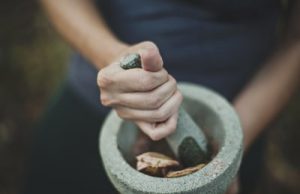
Putting it all together
The advice given here is geared towards enhancing the immune system during stressful times using simple, easy to obtain ingredients, and techniques accessible to all.
The guiding principle during the sheltering in place period is to both clear the body of accumulated metabolic by-products so as to enhance lymphatic flow and immune efficiency, and to also nourish and protect the body’s reserves, especially strengthening the nasopharynx and lungs.
Should you have symptoms of a cold, the first principle – of clearing – becomes more important.
At the end of this crisis, using these suggestions, you will have hopefully adopted a new, healthier lifestyle that will sustain you in years to come. These are challenging times, inviting us to find new pathways, new definitions, new identities for individuals and for societies. The effort we put to learn about ourselves, change our consumption, leaning to embrace the world, will serve to enhance our life and the life all around us.
Set time for self-care daily:
– In the morning stretch and practice breathing.
– Before bed, practice breathing and restorative poses.
– Exercise once a day for 30 minutes. It should be vigorous enough, for you, to induce light sweating.
– Enjoy walking meditation, indoors or outdoors.
– Stop, breathe, stretch, invigorate (downward dog) a few times a day.
– Meditate once a day for 5-20 minutes, or for 5-minute stretches 4 times a day.
– Prepare your meals consciously. Eat your meals consciously.
– Rinse your nose with salt water every day, preferably with antimicrobial essential oils.
– Make and drink the Immune Enhancing Herbal Tea every day.
– Moxa (warm up) the neck and upper back before bed (then wrap up). This can be done just before bed, or even in bed.
Shelter in Place Period
Immune Enhancing Tea one dose daily
Reduce/eliminate sugar, starch, carbs. Increase vegetables and fruits.
Nasal Rinsing.
If you start to get sick
Eliminate all sugar, starch, and plain carb consumption. Eat lightly!
Immune Enhancing Tea with added nettle and dandelion root 3 times a day.
If cough develops – add mustard and clove seeds to the tea.
Nasal rinse twice a day with essential oils.
Increase horseradish in diet.
Downward dog and other exercises can clear a cold.
Hot bath with salts and essential oils.
Ear swabbing once a day for 3 days.
Temperature of 100.4 F (38 C) or higher – qualifies you for a Covid-19 test.
Call for herbs.
If you get short of breath
Current guidelines suggest hospitalization
Consult with me regarding exercise routines.
Maintain breathing routines as best you can.
Increase nettle in Immune Enhancing Tea.
Use mustard seed, horseradish, and dandelion poultice on chest.
Call for herbs.
Post-Covid Period
Reduce/eliminate sugar, starch, carbs. Increase fruits and vegetables.
Maintain your exercise, breathing and meditation routines.
Nasal rinse once or twice a week (salt water only)
Enjoy what you learned and keep a clean diet, physically and mentally